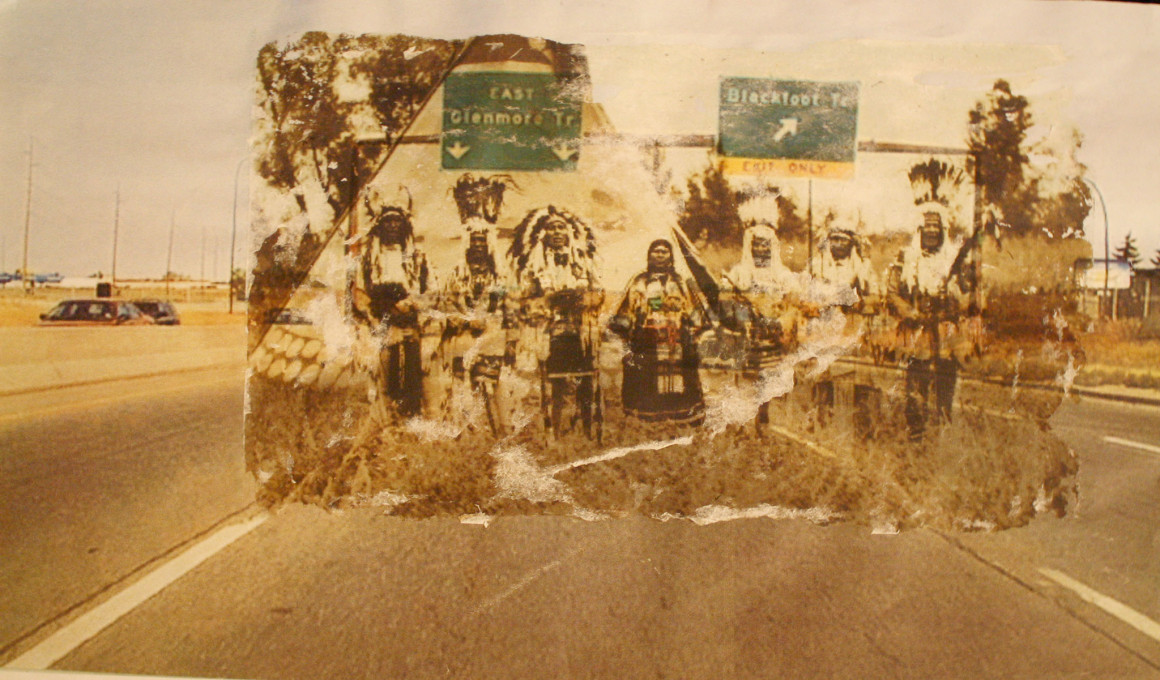
Guerilla art exhibition takes over streets of Calgary
By Liv Ingram, December 4 2014 —
There’s a new art exhibition in Calgary, but you won’t find it in a gallery. In fact, you might walk right past and not even realize it.
The Calgary Biennial is a contemporary guerrilla art exhibition that features public art pieces on billboards, bus stops, cellphones, telephone poles, newspapers and alleyways from now until March 2015.
“The public’s perception of public art definitely trends towards more permanent, monumental things,” says Calgary Biennial curator Steven Cottingham. “[The exhibition] is doing a lot of temporary, sometimes invisible, actions that are equally public art.”
The inaugural Biennial in 2012, entitled Hearts of the New West, explored the concept of home. This year’s exposition, Atlas Sighed, examines how people interact with that home and challenges society’s relationship with capitalism.
Over a dozen artists will create works around town, with new installations appearing every few weeks. The art will not be marked as part of an art exposition, but will subtly infiltrate the environment.
Artist Alannah Clamp placed a classified ad in the Calgary Herald on Dec. 2 that read “Let’s fall in love and split the rent.” Cottingham says the ad represents an “endearing desperation for intimacy” that is also a pragmatic view of modern love.
Dan Zimmerman’s LikeBlockr is a free, downloadable app that hides the number of likes a photo has on Instagram. The app encourages people to enjoy the quality of photos as opposed to absently ‘liking’ them and moving to the next image.
Cottingham says the most ambitious work of the exhibition is Brittney Bear Hat’s Blackfoot. On a billboard near the intersection of Blackfoot Trail and Glenmore Trail, Bear Hat superimposes a photo of her ancestors, Blackfoot chiefs, over a photo of the intersection.
“She very simply is asking what are we doing when we name things specifically after these Aboriginal cultural identifiers,” says Cottingham. “What is the purpose? Are we paying respect? Are we acknowledging the problematic history and in some way apologizing? Or is it just another way or appropriating something that did not belong to us and integrating it into our culture?”
Cottingham didn’t consult the city about the exhibition and is unsure about the legality of it, but he hopes the Biennial will encourage people to reclaim public space and interact with the city.
“I want to challenge the way we think of public space and who’s in control of it. If we’re being democratic, it belongs to everyone and not just people who have money to erect buildings and monuments,” Cottingham says. “I just want people to think more about equality, the roots of democracy and what it means to try and do the best for everyone.”
